Race across the tundra—white spruce vs. snowshoe hare
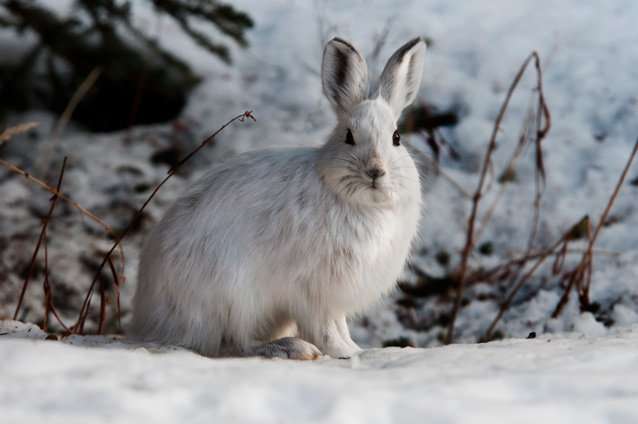
The tale of the tortoise and the hare is being retold. In Alaska's far north, it's become the race of the white spruce tree and the snowshoe hare.
With Alaska's warming climate, forests are moving upward to higher elevations and northward to higher latitudes. Scientists at the National Science Foundation (NSF) Bonanza Creek Long-Term Ecological Research (LTER) site in Alaska, one of 28 such NSF LTER sites, are working to understand interactions between changing tree lines and plant-eating animals such as the snowshoe hare.
"This study is a reminder that there will be winners and losers as climate changes, and that species' interactions with their environments will play a critical role in how the landscape changes," said Colette St. Mary, an NSF LTER program director.
Scientists Knut Kielland and Justin Olnes of the University of Alaska Fairbanks reconstructed the pattern of spruce tree growth at the Bonanza Creek LTER site from 1970 to 2009. They found that fewer young spruce trees had taken root during periods when snowshoe hares were abundant. The results were recently published in the journals Ecology and Forest Ecology and Management.
Spruce twigs are an important winter food for snowshoe hares; when the hares can get at them, these herbivores may nibble every branch in sight.
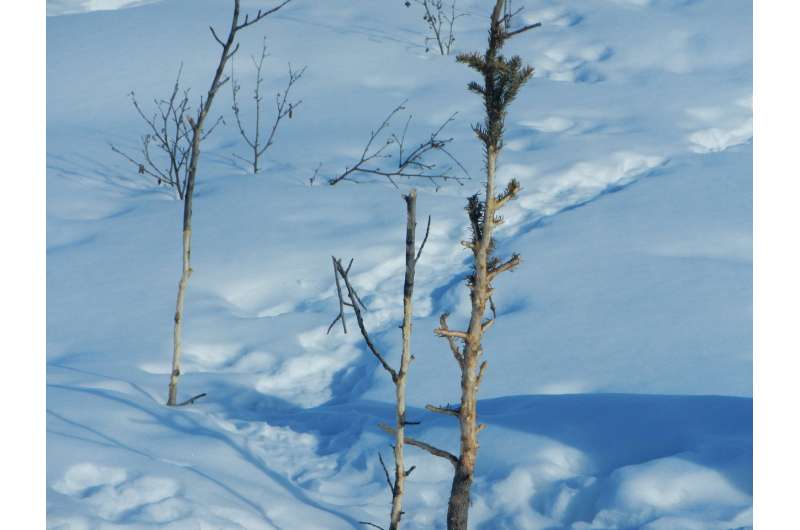
Hare vs. spruce
The habitats and ranges of snowshoe hares and white spruces overlap, said Kielland. Hares and spruces are common residents of forested floodplains, but hares, being mobile, are often faster than spruce seedlings in reaching the best habitat.
Snowshoe hares have now made their way north to Alaska's shrubby environment beyond the state's forest tree line. As spruce trees follow behind, they must pass through a "snowshoe hare filter."
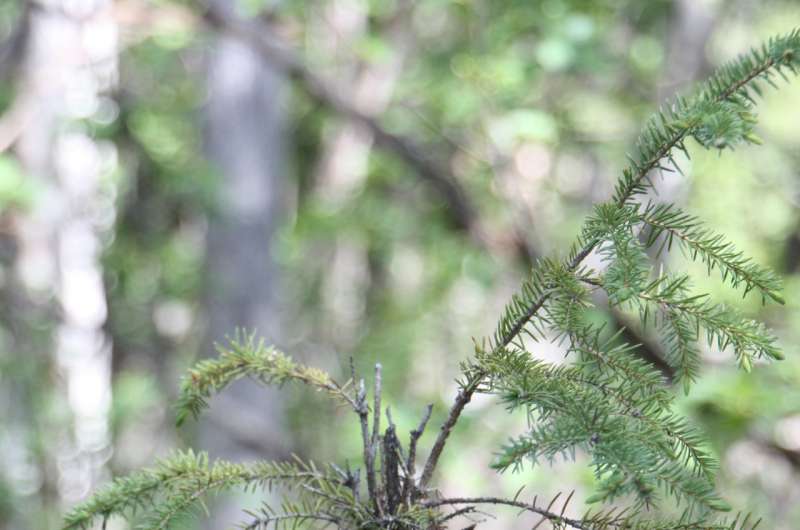
The filter was especially evident after the last hare population peak in 2009, said Olnes. With greater numbers of hares feeding on spruce trees, fewer spruce seedlings were able to grow to adulthood.
But all was not lost for the trees.
"Spruces became well-established on more open floodplain sites due to the lower hare population there, but those sites placed the trees at greater risk of drying out during the hot summer months," said Kielland. "The hares are effectively pushing spruce trees into unfavorable habitats."
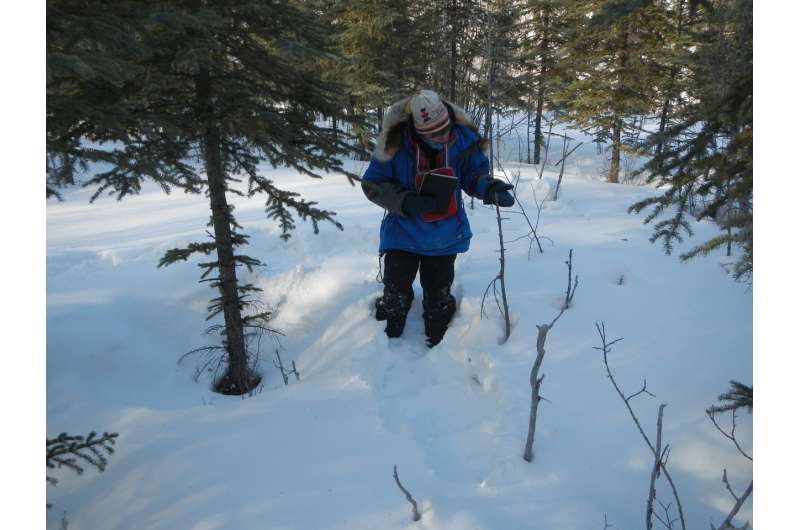
Winners and losers
The research, scientists say, provides a unique opportunity to study the interplay among rising temperatures, shifting tree lines and changing habitats.
As far-northern tundra gives way to low-growing shrubs and then to forests, the distribution of snowshoe hares is a factor in where spruce trees can successfully grow. Forest scientists and resource managers should therefore keep in mind the ecosystem role of small herbivores like snowshoe hares, Olnes said.
Will the hare ultimately "outrun" the spruce? It's too soon, say the scientists, to know the winner of this race across the tundra.
-
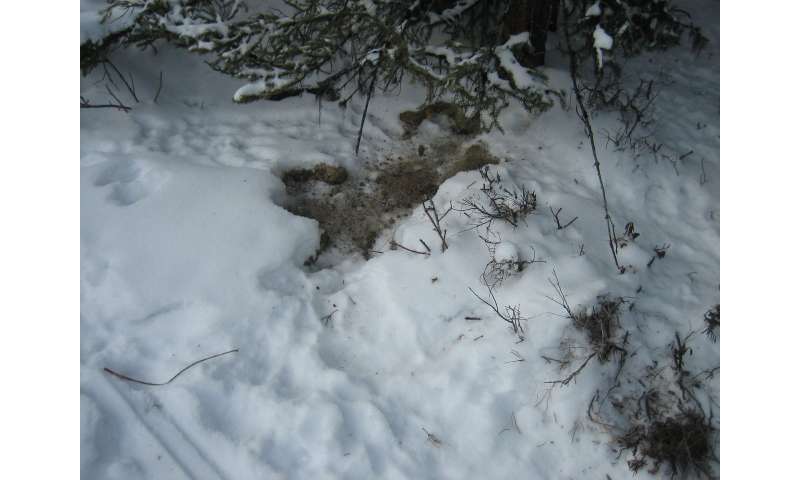
Snowshoe hares dig for mineral-laden soils to eat; they use soils to deactivate tannins in forage. Credit: K. Kielland -
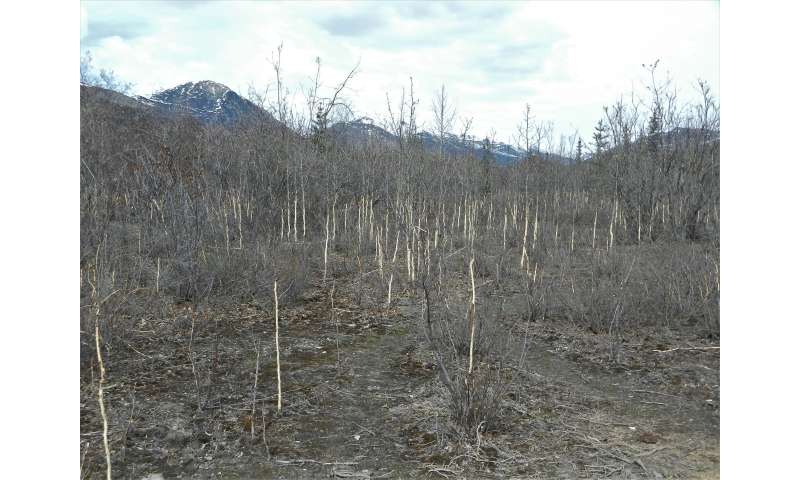
Snowshoe hares also browse on willow trees, here in early spring along Alaska's Dietrich River. Credit: K. Kielland
Journal information: Forest Ecology and Management , Ecology
Provided by National Science Foundation




















